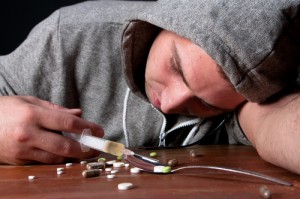 Surveys show that teens and young adults abuse prescription drugs because they think they are safer than street drugs. If that impression were actually true, then it would seem that the majority of opiate overdose deaths would come from heroin. A new report shows that prescription opiates are killing more people than heroin.
Surveys show that teens and young adults abuse prescription drugs because they think they are safer than street drugs. If that impression were actually true, then it would seem that the majority of opiate overdose deaths would come from heroin. A new report shows that prescription opiates are killing more people than heroin.
Many people get started abusing these drugs after they are prescribed by a doctor. With many drugs that end up being abused, the first thing that happens is that a patient develops a tolerance to the initial dose. As a tolerance is built up, it takes more of the same drug to provide the same degree of pain relief. The patient returns to the doctor and explains that they are once again in pain (or sleepless or anxious, depending on which drug was prescribed). The doctor expects this and increases the dose. This may happen again, maybe even two or three more times. At this point, many doctors will become uncomfortable with increasing the dose and may refuse. Or he may become concerned with the possibility of overuse or abuse by the patient and cut him or her off completely.
If this happens, the patient often panics and tries to find another doctor to prescribe the drugs that are now needed. If he stops cold, he’s going to get sick. Perhaps he’s run out of his prescription a time or two and knows how bad it gets. He’s got to get more drugs – now. He sees another doctor and tries to say all the right things so he can end up with a pill bottle in his hand. If the doctor recognizes this “drug-seeking behavior,” he may turn the turn the patient out of his practice. This kind of behavior is seen daily (or many times) in emergency rooms. ERs have had to develop very strict policies to prevent themselves from becoming a supplier for drug addicts, including giving no more than three days worth of pain medication.
So, back to our patient. He is tossed out by his original doctor and the second doctor spotted the drug-seeking behavior and threw him out. What are his choices now? He can hit the street and look for a heroin dealer.
Sadly, it’s possible that hundreds of thousands of people have made this transition from pills to heroin.

Statistics courtesy of the 2013 National Survey on Drugs and Health, Substance Abuse and Mental Health Services Administration.
This increasing graph of heroin use includes the increase in heroin use that is in part due to this trend.
With heroin’s uncontrolled manufacture, inclusion of contaminants and fluctuating potency, it would seem that more people would die from the use of use of heroin than prescription drugs. Ironically, this is not the case.
According to a report just released by the Community of Anti-Drug Coalitions of America and the Office of National Drug Control Policy, 70% of deaths from opiate-type drugs involved prescription painkillers, not heroin.
This new report underlines the necessity of avoiding the use of opiate (or the synthetic version, opioids) painkillers when possible. Perhaps an over-the-counter pain reliever can be used. Or if a doctor sends home a 30-day supply of opioid painkiller, perhaps only two or three days’ use of these pills is needed. The remainder must be locked away or turned in for destruction on one of the Prescription Take-Back Days sponsored by the Drug Enforcement Administration.
Well-meaning people who never intended to abuse drugs or become addicted have fallen into this trap. With some care, it doesn’t have to include you or your family.
http://www.whitehouse.gov/ondcp/prescription-drug-abuse
http://www.samhsa.gov/data/nsduh/2012summnatfinddettables/nationalfindings/nsduhresults2012.htm#fig2.4